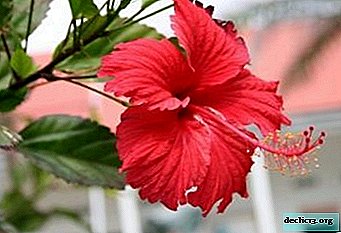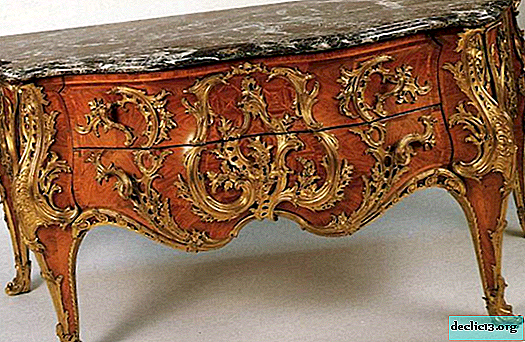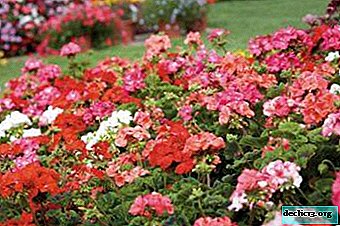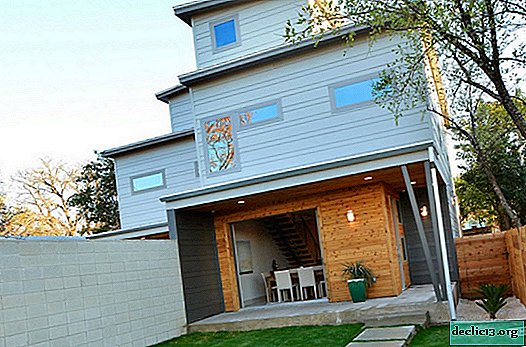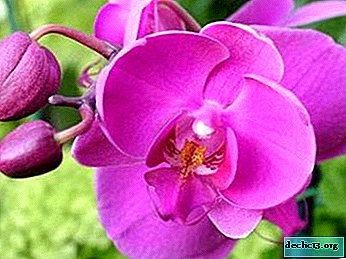Meet the Crassula "mix"! Everything you can tell about this beautiful flower.
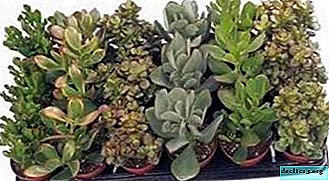
Now in stores a large selection of home flowers. People buy new plants for themselves or as a gift to their family and friends. In any case, I would not want this choice to become a problem for you or your loved ones.
Crassula "mix" is the perfect option: the money tree is not whimsical, it pleases with beautiful and spectacular foliage with good care.
What is it and what does it look like?
Crassula "mix" belongs to the family Crassulaceae and includes 350 varieties.Common features:
- The leaves are thick and fleshy. Due to the fact that the plant comes from South Africa, the leaves tend to retain moisture, and a glossy surface with a waxy coating does not allow this moisture to evaporate. Leaves can be 1 to 5 centimeters in size. The color of leaves of different shades of green, but there are still purple and variegated forms. Leaves are arranged in pairs opposite each other.
- The trunk of the plant is usually straight, can grow up to 2 meters. With age, the trunk becomes covered with woody bark.
- When the crassula blooms, small flowers of white color appear, but they can have different shades: yellowish, pinkish, reddish or bluish. Flowers are collected in racemes or umbrellas.
Descriptions and photos of species and varieties
Next, we offer to familiarize yourself with descriptions of various species and varieties, as well as photos of plants.
Lycopodioides (Arachnoid)
A plant no more than 25 centimeters tall and compact. It differs in small tetrahedral leaves, which are folded like tiles on the roof.

Arborencens (Treelike)
The plant, on the contrary, is large, it can grow with proper care up to 50 centimeters. The leaves are round in shape and are distinguished by bluish and red tinge along the edges..

Picturata (Spot)
This variety is highly branched, with an interesting leaf design. On green leaves, red and purple specks are clearly visible, and the lower part of the leaf is violet-red.

Ovata (Ovoid or Oval)
Also a large plant growing up to a meter tall. The leaves are oval in shape, the color of the leaf on top is green, below is a reddish hue. Refers to highly branching plants.

Ovata cv. Hummel's sunset (Hamvels Sunset Variegate Ovata)
This variety of ovoid Crassula is distinguished by its decorative effect. due to the unusual color of the leaves. Leaves have white or yellow stripes in the middle, and a red border around the edges.

Ovata Gollum (Hobbit) (Ovata "Gollum (Hobbit)")
This variety of ovoid Crassula is characterized by a very interesting leaf shape, they are compared with folded baggies, since the leaves are fused from the base to the middle.

Home Care
| Lighting | Crassula loves a lot of light and needs to be in indirect sunlight. But in no case do not put it under direct sunlight, the leaves will turn red and begin to fall off. |
| Temperature | In summer and spring, the temperature should be between 24-25 degrees. In winter, create temperature conditions of 12-14 degrees. If the temperature is higher, the flower will start to throw off the leaves. Do not place the plant next to heating appliances in winter. |
| Location | When you bring a plant into the house, be sure to find out where it feels better. So this species prefers eastern or western windows (or southeast and southwest), and in summer the plant feels good on the balcony |
| Watering | In summer, it is recommended to water the rosula once a week, and in winter 2 times a month. |
| The soil | The soil is the same as for cacti, since this plant belongs to succulents. You can mix the soil yourself, taking the earth, coal and sand. Be sure to put drainage about two centimeters on the bottom of the pot. For large plants, this layer can be increased to 10 centimeters. Do not take a very deep pot, as this plant has a shallow root system. It is better to buy a pot heavy so that the plant does not fall and is not damaged. |
| Top dressing | Fertilizers are the same as for cacti or universal. Top dressing is performed 1-2 times a month from April to September. In winter, the concentration of fertilizer is halved and once a month is enough. |
| Air humidity | Humidity is not fundamental to this flower. It easily tolerates the dry air of our apartments. It is also not necessary to spray it, but do not forget to wipe the leaves from dust. |
| Pruning | If you want Crassula to have a thick trunk, dense foliage and a beautiful shape, you need to regularly prune and pinch it. On the shoots, leave 4-5 leaves. Pinch the top of the plant so that it gives more lateral shoots. To prune the branches, a clean and sharp pruner is used. |
We suggest watching a useful video about caring for a fat woman:
Flower propagation and transplantation
 Crassula needs to be transplanted and engaged in its reproduction in the spring. Transplantation is required for young plants every year, and for adults every 2-3 years or sometimes you can just change the topsoil in the pot. The plant is transplanted along with a lump of earth. When transplanting, you can inspect the roots and, if you find long roots, they can be trimmed.
Crassula needs to be transplanted and engaged in its reproduction in the spring. Transplantation is required for young plants every year, and for adults every 2-3 years or sometimes you can just change the topsoil in the pot. The plant is transplanted along with a lump of earth. When transplanting, you can inspect the roots and, if you find long roots, they can be trimmed.
Be sure to sprinkle the cut with charcoal so that the root does not rot. Florists love this flower for its simplicity and ease of reproduction.
Several ways:
- Cuttings. The most common way and simple. The cuttings of the plant are placed in water, after the appearance of roots, planted in the ground, watered a young plant every day.
- Seeds. Seeds are laid in the ground, lightly sprinkled on top and wait for seedlings, then the care is the same as for the cuttings.
- Dividing the bush. When transplanting from one pot to another, it is possible to divide large specimens. In this case, the roots are already there, so the plants take root easily.
- From sheet. The most difficult and risky way to breed the rosula. Leaflets often do not have time to take root and rot. The healthiest and strongest leaves are selected for this method. They are first dried for about two days in a dry place. Then put a leaf in the water or immediately into the ground. Provide warmth and light for rooting.
You will find more detailed information on the methods of propagation of Crassula in this video:
Care problems
Although Crassula is an unpretentious plant, care is still required.Here are some of the problems that amateur gardeners face:
- the plant dropped its leaves: it was probably not watering for a long time, the flower was watered with cold water or stood in a draft;
- the plant turns black from the root: infection with root rot, transplant the crassula, removing damaged roots;
- the leaves turned red: a sunburn, the flower was left in direct sunlight;
- leaves lose their color, turn pale: too abundant watering;
- leaves shriveled, lose their luster, dry brown spots appear: lack of moisture;
- soft brown spots on the leaves: fungal disease;
- a spider web appeared on the plant: a spider mite was wound, treat with special chemicals or a solution with laundry soap;
- the stem does not grow straight, but curved: waterlogging of the soil or lack of light.
So, if you decide to please yourself or your loved ones with a new flower, then the red mix is perfect for a present. The plant is decorative and will not cause problems maintenance.

